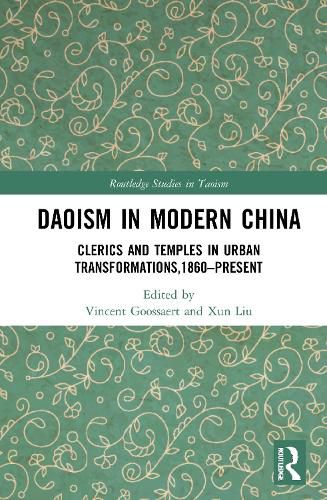Readings Newsletter
Become a Readings Member to make your shopping experience even easier.
Sign in or sign up for free!
You’re not far away from qualifying for FREE standard shipping within Australia
You’ve qualified for FREE standard shipping within Australia
The cart is loading…






This book questions whether temples and Daoism are two independent aspects of modern Chinese religion or if they are indissolubly linked. It presents a useful analysis as to how modern history has changed the structure and organization of religious and social life in China, and the role that Daoism plays in this.
Using an interdisciplinary approach combining historical research and fieldwork, this book focuses on urban centers in China, as this is where sociopolitical changes came earliest and affected religious life to the greatest extent and also where the largest central Daoist temples were and are located. It compares case studies from central, eastern, and southern China with published evidence and research on other Chinese cities. Contributors examine how Daoism interacted with traditional urban social, cultural, and commercial institutions and pays close attention to how it dealt with processes of state expansion, commercialization, migration, and urban development in modern times. This book also analyses the evolution of urban religious life in modern China, particularly the ways in which temple communities, lay urbanites, and professional Daoists interact with one another.
A solid ethnography that presents an abundance of new historical information, this book will be of interest to academics in the field of Asian studies, Daoist studies, Asian religions, and modern China.
$9.00 standard shipping within Australia
FREE standard shipping within Australia for orders over $100.00
Express & International shipping calculated at checkout
This book questions whether temples and Daoism are two independent aspects of modern Chinese religion or if they are indissolubly linked. It presents a useful analysis as to how modern history has changed the structure and organization of religious and social life in China, and the role that Daoism plays in this.
Using an interdisciplinary approach combining historical research and fieldwork, this book focuses on urban centers in China, as this is where sociopolitical changes came earliest and affected religious life to the greatest extent and also where the largest central Daoist temples were and are located. It compares case studies from central, eastern, and southern China with published evidence and research on other Chinese cities. Contributors examine how Daoism interacted with traditional urban social, cultural, and commercial institutions and pays close attention to how it dealt with processes of state expansion, commercialization, migration, and urban development in modern times. This book also analyses the evolution of urban religious life in modern China, particularly the ways in which temple communities, lay urbanites, and professional Daoists interact with one another.
A solid ethnography that presents an abundance of new historical information, this book will be of interest to academics in the field of Asian studies, Daoist studies, Asian religions, and modern China.